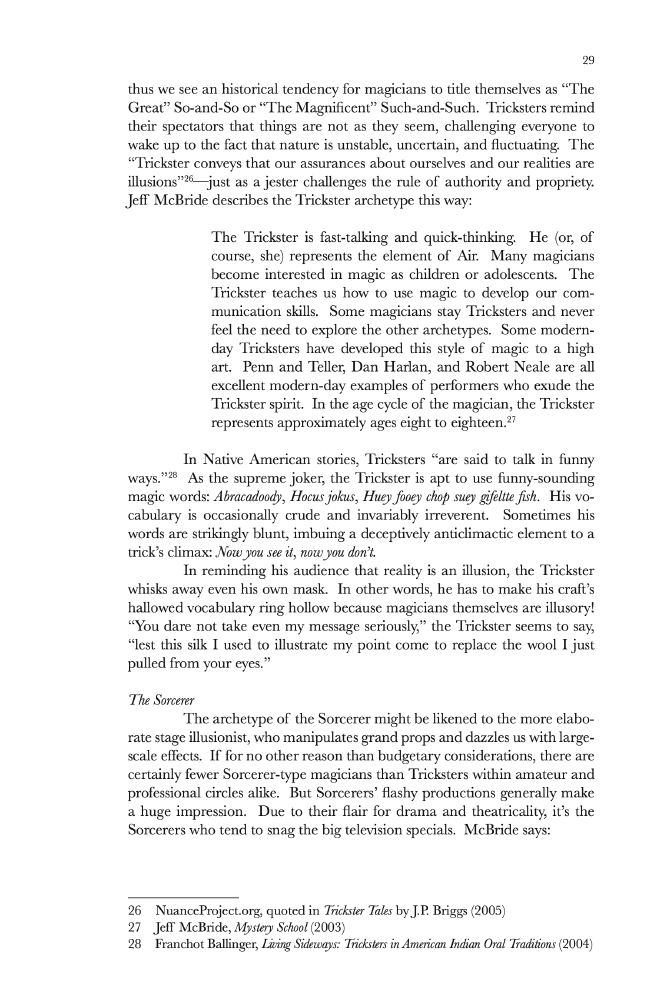
thus we see an historical tendency for magicians to title themselves as "The
Great" So-and-So or "The Magnificent" Such-and-Such. Tricksters remind
their spectators that things are not as they seem, challenging everyone to
wake up to the fact that nature is unstable, uncertain, and fluctuating. The
"Trickster conveys that our assurances about ourselves and our realities are
illusions" -- just as a jester challenges the rule of authority and propriety.
Jeff McBride describes the Trickster archetype this way:
The Trickster is fast-talking and quick-thinking. He (or, of
course, she) represents the element of Air. Many magicians
become interested in magic as children or adolescents. The
Trickster teaches us how to use magic to develop our communication
skills. Some magicians stay Tricksters and never
feel the need to explore the other archetypes. Some modern-
day Tricksters have developed this style of magic to a high
art. Penn and Teller, Dan Harlan, and Robert Neale are all
excellent modern-day examples of performers who exude the
Trickster spirit. In the age cycle of the magician, the Trickster
represents approximately ages eight to eighteen.27
In Native American stories, Tricksters "are said to talk in funny
ways."28 As the supreme joker, the Trickster is apt to use funny-sounding
magic words: Abracadoody, Hocus jokus, Huey fooey chop suey gifeltte fish. His vocabulary
is occasionally crude and invariably irreverent. Sometimes his
words are strikingly blunt, imbuing a deceptively anticlimactic element to a
trick's climax: Now you see it, now you don't.
In reminding his audience that reality is an illusion, the Trickster
whisks away even his own mask. In other words, he has to make his craft's
hallowed vocabulary ring hollow because magicians themselves are illusory!
"You dare not take even my message seriously," the Trickster seems to say,
"lest this silk I used to illustrate my point come to replace the wool I just
pulled from your eyes."
The Sorcerer
The archetype of the Sorcerer might be likened to the more elabo
rate stage illusionist, who manipulates grand props and dazzles us with large-
scale effects. If for no other reason than budgetary considerations, there are
certainly fewer Sorcerer-type magicians than Tricksters within amateur and
professional circles alike. But Sorcerers' flashy productions generally make
a huge impression. Due to their flair for drama and theatricality, it's the
Sorcerers who tend to snag the big television specials. McBride says:
26 NuanceProject.org, quoted in Trickster Tales by J.P. Briggs (2005)
27 Jeff McBride, Mystery School (200 )
28 Franchot Ballinger, Living Sideways: Tricksters in American Indian Oral Traditions (2004)